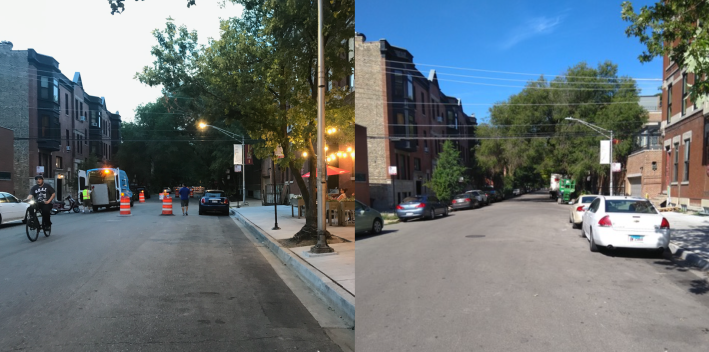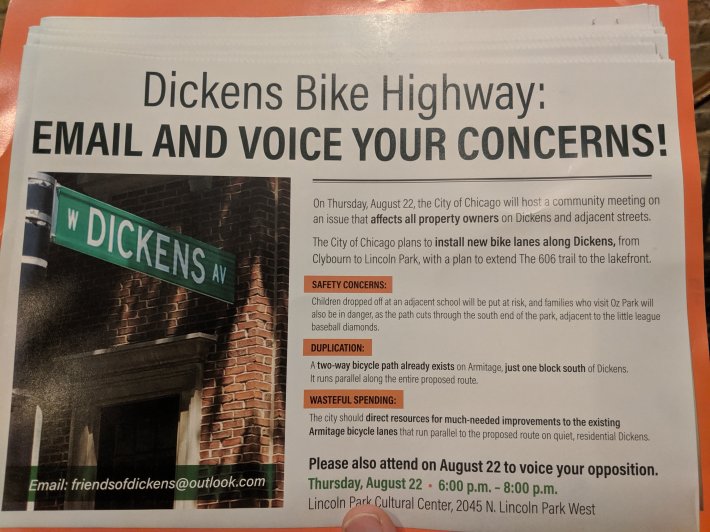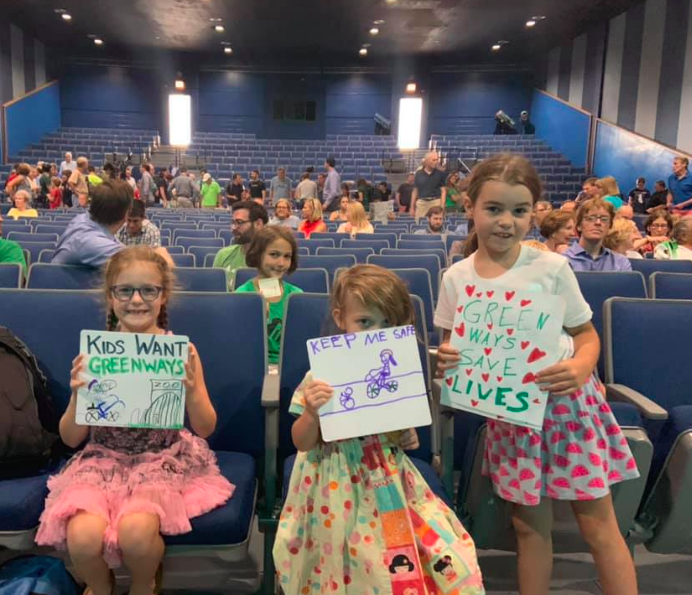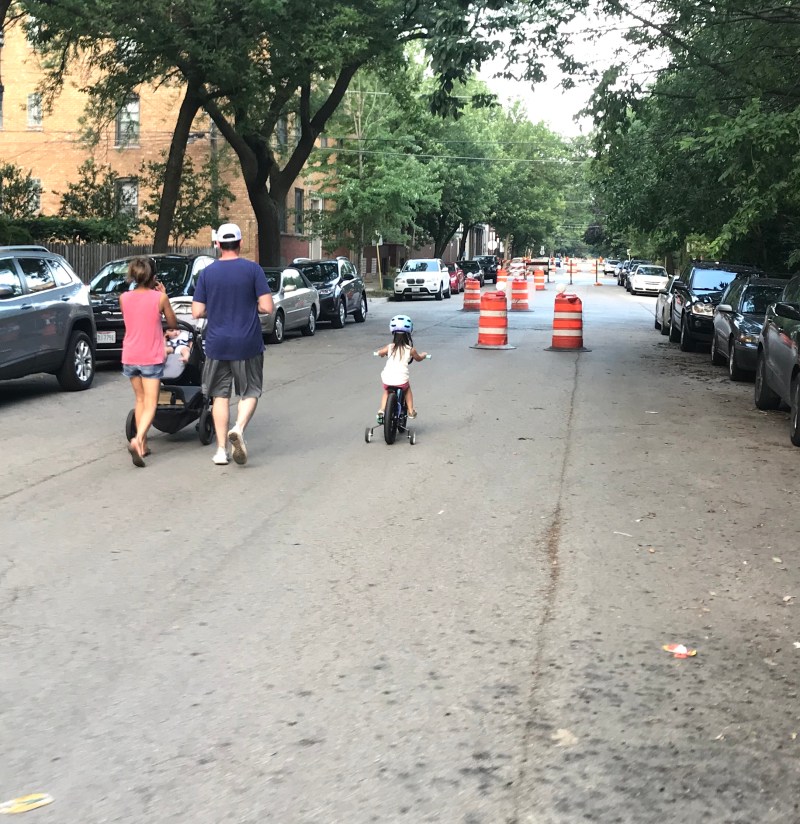Well that didn't take long.
On Monday, Lincoln Park alderman Michele Smith wrote constituents that, after a run of about six weeks, the Dickens Slow Street pilot "will conclude in the next two weeks." Just a few days later, the traffic calming treatment, which enabled safe, socially-distanced walking and biking in the roadway, has already been dismantled.

As with other Chicago Slow Streets (the city calls them "Shared Streets"), the Dickens project was supposed to last for a month, after which a decision would be made on whether to extend the test for another 30 days. Slow Streets involve banning motorized through traffic, but parking, deliveries, and drop-offs and pickups are allowed.
"We are ending the program primarily because St. James School, which will be resuming in-person classes soon, cannot effectively do their pickup and drop off under the shared street conditions," Smith wrote in her newsletter. It's likely the Slow Street design could have been tweaked to accommodate this use.
“Car owners complained that the barrels and barricades made it difficult to access their alleys," Smith added. "Many also objected to the aesthetics of the street." While the alderman, rather than the Chicago Department of Transportation, made the final decision to take down the Slow Street, we should cut her some slack since some next-level, "Parks and Recreations"-style Not In My Back Yard types have been breathing down her neck her about the project.
The Slow Street was intended as a dry run for the proposed Dickens Neighborhood Greenway, which would involve permanent traffic calming infrastructure and a contraflow bike lane. The anonymous, fear-mongering NIMBY group Friends of Dickens launched a website and sent out mailings to oppose that initiative.

Still, it's frustrating that the hugely successful Dickens Slow Street project was cut short, while we're still in the thick of the pandemic and there's still another month of official summer left. The Slow Street had a perfect safety record, with no reported crashes, and CDOT counted a whopping 1,549 people biking, walking, or jogging on the street in a single day, including 636 bicyclists and 913 pedestrians.
Residents have already pushed back against the premature death of the Dickens Slow Street. Neighbor Sam Brunson, a Loyola University professor, wrote Smith earlier this week asking her to reverse her decision. "My family has used it almost daily since it was set up and we're not alone. Every time we're on it we see bikers and families walking, enjoying the safety and freedom from cars it provides... With the Slow Street gone -- and the nearly inevitable return of lockdown in our city -- there won't be anywhere we can walk with our family socially-distanced." He noted on Twitter that Dickens is not supposed to be a high-speed street, so drivers who are in a hurry should go a block south or north to Armitage or Webster avenues instead.
This was my letter. Same sentiment. pic.twitter.com/9uk4HHnMhu
— Neil Renicker (@tinystride) August 19, 2020
While it's too late to save the Dickens Slow Street, it's time to redouble efforts to get the permanent Dickens Greenway approved. That should have already happened, since a year ago today the vast majority of people who testified at a well-attended hearing on the greenway voiced support.

Smith has invited constituents to weigh in on the Dickens Slow Street at yourvoice@ward43.org. You can also put in a good word for the Dickens Neighborhood Greenway while you're at it.





